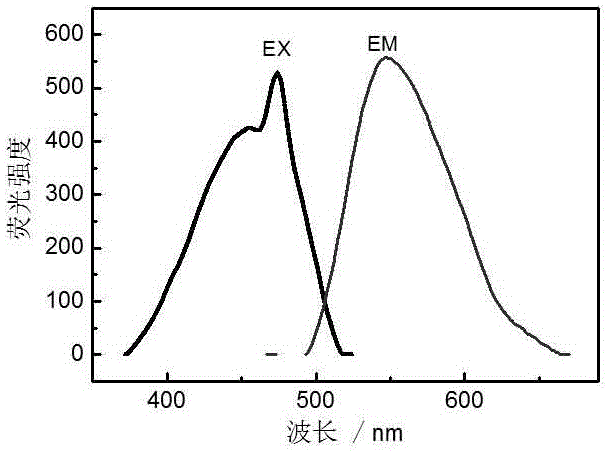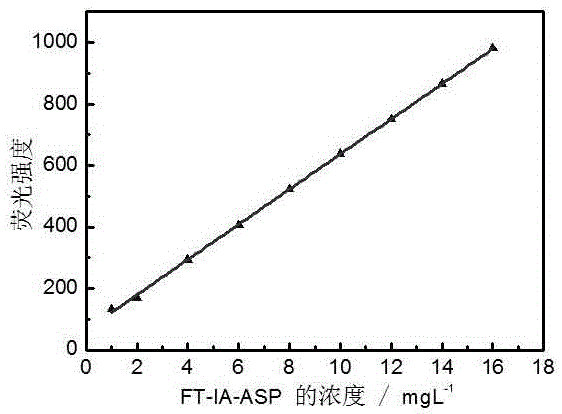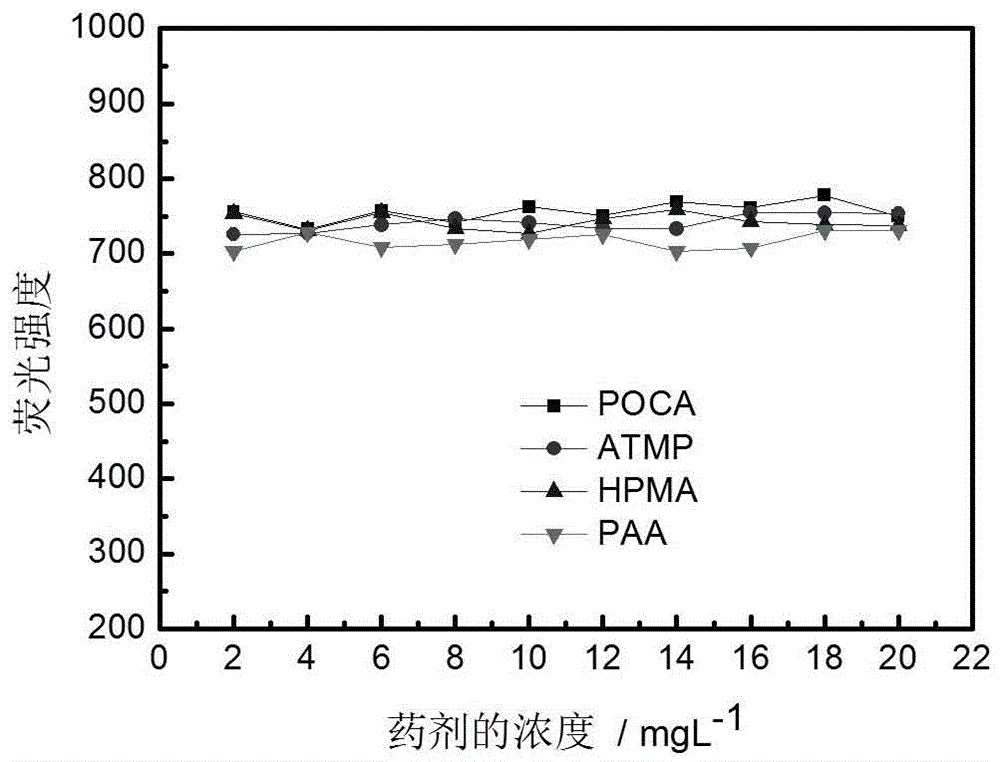Fluorescent tracer type itaconic acid and aspartic acid copolymer and preparation method and application thereof
Itaconic acid aspartic acid, fluorescent tracer technology, applied in the direction of fluorescence/phosphorescence, chemical instruments and methods, luminescent materials, etc., can solve the problems of limited development and application, rare reaction raw materials, decomposition, etc., and achieve online Effects of dosing, simplifying on-site operations, and reducing interference
- Summary
- Abstract
- Description
- Claims
- Application Information
AI Technical Summary
Problems solved by technology
Method used
Image
Examples
Embodiment 1
[0031] Example 1 Weigh 10 g (36.09 mmol) of 4-bromo-1,8-naphthalene anhydride into a three-necked flask, add 30 mL of ethanol, stir slowly, and drop N,N-dimethyl-1,3-propanediamine 9.1 The mixed solution of mL (72.18mmol) and 20mL ethanol was dripped in half an hour, and slowly rose to reflux temperature at the same time, followed by thin-layer chromatography until the reaction was completed, cooled and filtered to obtain a yellow solid, and recrystallized from ethanol to obtain the target product ( I).
[0032] Weigh 5 g (13.84 mmol) of the product (I) generated above in a three-necked flask, add 20 mL of ethylene glycol methyl ether, stir slowly, add dropwise a mixture of 2.7 mL (27.7 mmol) of n-butylamine and 10 mL of ethanol, and simultaneously Slowly rise to 130°C, followed by thin-layer chromatography until the end of the reaction, suction filtration under reduced pressure to remove excess ethylene glycol methyl ether, DMF recrystallization, to obtain the target product ...
Embodiment 2
[0034] Example 2 Put 40mL of deionized water, aspartic acid 9.3g (0.28mol), sodium hydroxide 0.16g and fluorescent monomer (FT ) 0.3g, heated up to 80°C under stirring, passed nitrogen to remove oxygen, and under the protection of nitrogen, added dropwise 15g of 30% hydrogen peroxide solution (accounting for about 10% of monomer mass), 50mL of itaconic acid solution (Containing IA 36.4g, 0.28mol), dripping finished within 2h, continued to keep warm for 1h, cooled and discharged to obtain the product FT-IA-ASP (brown liquid) of the present invention.
[0035] The excitation wavelength and emission wavelength of the polymer are similar to those of the fluorescent monomer, which are also 474nm and 554nm respectively. figure 1 , that is, the wavelength does not shift after polymerization. At the same time, the concentration of the polymer and the relative fluorescence intensity have a good linear relationship, the linear correlation coefficient is 0.99968, and the detection limit...
Embodiment 3
[0037] Example 3 The static scale inhibition method was used to evaluate the scale inhibition performance of the fluorescent polymer on calcium carbonate. The test conditions are as follows:
[0038] Temperature: 80°C; Drug: the product of Example 2; Dosing concentration: 2, 4, 6, 8, 10, 12, 14, 16, 18, 20mg·L -1 ;Test time: 10h; Test configuration water: Ca 2+ 250mg·L -1 , HCO 3 - 250mg·L -1 (both CaCO 3 Calculated), the concentration factor is 1.5 times; at the same time, do a blank experiment without adding medicament. According to this method, the dosage of the drug is 12mg L -1 , the scale inhibition rate to calcium carbonate is 96.1%. see attached results Figure 4 .
PUM
| Property | Measurement | Unit |
|---|---|---|
| scale inhibition rate | aaaaa | aaaaa |
Abstract
Description
Claims
Application Information
 Login to View More
Login to View More - R&D
- Intellectual Property
- Life Sciences
- Materials
- Tech Scout
- Unparalleled Data Quality
- Higher Quality Content
- 60% Fewer Hallucinations
Browse by: Latest US Patents, China's latest patents, Technical Efficacy Thesaurus, Application Domain, Technology Topic, Popular Technical Reports.
© 2025 PatSnap. All rights reserved.Legal|Privacy policy|Modern Slavery Act Transparency Statement|Sitemap|About US| Contact US: help@patsnap.com



